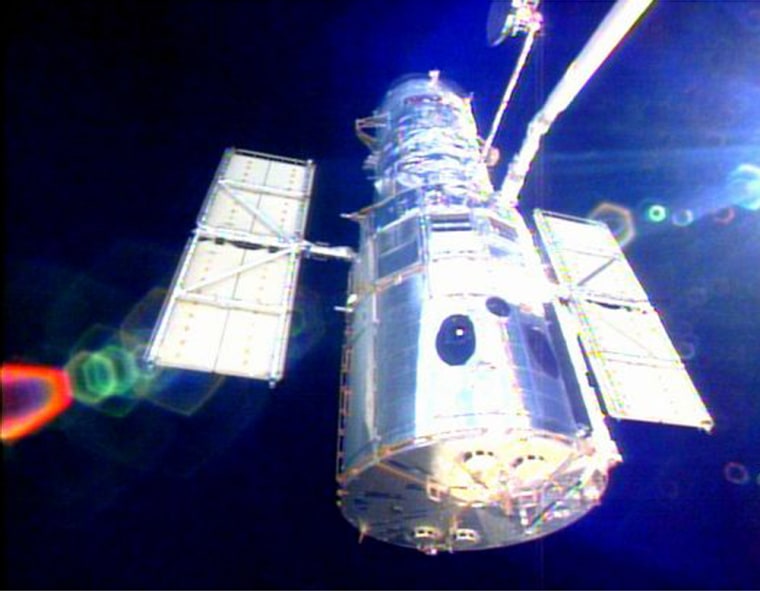The signs are looking promising for the Hubble Space Telescope, once thought doomed because of worries over astronaut safety. NASA set plans for a big announcement Tuesday after top officials met for three hours Friday.
Although there was no official word on the decision, the space agency sent out a press release about a gala announcement ceremony for Tuesday at the Goddard Space Center in suburban Washington, which helps oversee the 16-year-old space telescope.
The press release said the ceremony includes a "news conference with the astronauts who would carry out the mission" — if the agency decides to go ahead with a shuttle flight to rehab the telescope.
The issue that NASA officials had to wrestle with was a matter of space shuttle safety. If the spacecraft heading to the aging telescope has a problem, there is no place to go for safe haven, unlike NASA's 14 remaining shuttle missions to the international space station.
"That's a real comfort to know that if you have a problem, you have a place to hang out," said astronaut Joe Tanner, who flew on a Hubble servicing mission in 1997 and was part of the Atlantis crew that flew to the space station last month.
Although the space agency hasn't said anything officially, all signs are pointing toward a go-ahead for Hubble's repair, said University of Wisconsin-Madison astronomer Jay Gallagher, who is a member of a science team responsible for a camera in the Hubble Space Telescope.
The final Hubble repair mission was canceled by former NASA Administrator Sean O'Keefe two and a half years ago, after seven shuttle astronauts were killed in the 2003 Columbia tragedy. The decision was roundly criticized by scientists and politicians, but the then-administrator cited the risk to astronauts and the need to use the remaining shuttle flights to finish building the international space station.
O'Keefe had proposed using a robot to service Hubble, but a scientific advisory panel said the chance of completing such a mission on time was remote and that a manned mission had better odds of succeeding. The committee also said the risks of flying to Hubble weren't much greater than going to the space station.
The remaining 14 shuttle flights are dedicated to completing the space station by the time the fleet is grounded in 2010. If a Hubble servicing mission is approved, it would have to be squeezed into the space station construction schedule sometime in early 2008.
Slideshow 12 photos
Month in Space: January 2014
NASA also would have another shuttle on the launch pad, ready to make an emergency rescue trip if there were a catastrophic problem.
"I'd tell them to go ahead and do it, but don't grit your teeth," said Howard McCurdy, a space policy expert at American University. "And this is going to be a teeth-gritting mission."
On the list of Hubble repairs are replacement of aging batteries, guidance sensors and gyroscopes.
Among Hubble's many scientific accomplishments, the telescope has enabled direct observation of the universe as it was 12 billion years ago, discovered black holes at the center of many galaxies, provided measurements that helped establish the size and age of the universe and offered evidence that the expansion of the universe is accelerating. But the telescope also has popularized astronomy by producing countless wondrous images.
"For many people, it is a symbol of some of the best things about the space program," said W. Henry Lambright, a space policy expert at Syracuse University. "It reaches the average citizen in the way a lot of space projects, including the space station, do not."

